
10 minute read
LAND ROVER DAY OUT
Towing Training with land rover
The last time I towed something was around a decade ago, I had my old 300Tdi Discovery, and an even older twin axle caravan Every time we took it out for weekends away I was always in a heightened sense of anxiety. It wasn’t because it became a rather long vehicle, but at some point I knew I’d end up reversing it.
Advertisement
Like anything we do in life, the more you practise something the better you become at it. It didn’t take me too long to become fairly proficient, but as I said, that was at least ten years ago, and whatever skills I had back then surely have passed into oblivion - perished, just like my old Disco and caravan.
Therefore when I received an invite from the team at Land Rover to spend a day down at Eastnor Castle to learn about, and experience Land Rover’s Advanced Tow Assist on the new Defender, I was both excited, and a little bit nervous.
On arrival, and after the usual Covid checks, I was introduced to the team, and the only other journo' on the invite list, Alan Kidd from 4x4 Magazine and The Landy. Having met previously on other launches we had a good natter about random stuff before we got stuck in.
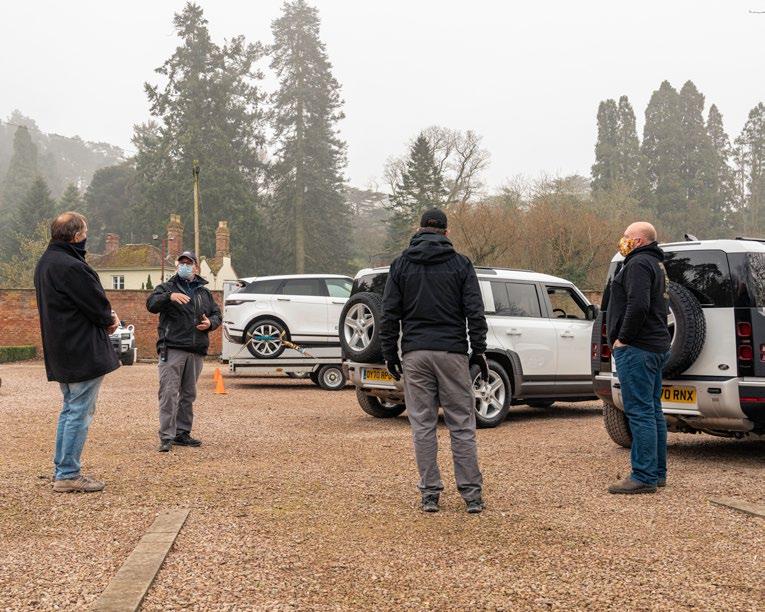
Advanced Tow Assist, what is it?
I’m sure we’ve all watched the video with Jack Whitehall and his Dad reversing an Airstream caravan from La Corbière Lighthouse in Jersey using just the cameras and heater dial to steer with. Basically, as Land Rover puts it
“Advanced Tow Assist allows drivers to reverse a trailer using the rotary controller on the centre console to guide the vehicle. Operating the pedals as normal, the intuitive system shows the predicted path of the caravan, horsebox or trailer on the infotainment touchscreen, enabling drivers to steer with ease as the vehicle calculates the precise level of counter-steering required to maintain the desired trajectory.”
So Advanced Tow Assist is primarily for those who don’t regularly tow and reverse trailers - a bit like me, I guess.
Before we got to the towing stage I had to first attach the trailer to the Defender, and starting with the basics, the Land Rover Experience team introduced me to the retractable tow hitch, and how to deploy it.
Like other commands, I could either deploy it from the front screen, or a button just inside of the back door. That was easy enough.
Next was to lower the suspension - again, this can be done in numerous ways - whilst sat in the cabin, using a button just inside of the back door or by the key fob.

With the height set to low and tow hitch deployed, it was time to reverse the Defender and connect it to the trailer - without using the mirrors, I might add. Using Land Rover’s Tow Hitch Assist, it couldn’t have been easier, the reversing cameras made it light work, and once it recognised that I was only around a foot away from the trailer, the view on the infotainment screen changes so that you’re now looking downwards, and can guide the tow hitch millimetre perfect under the trailer - clever stuff.
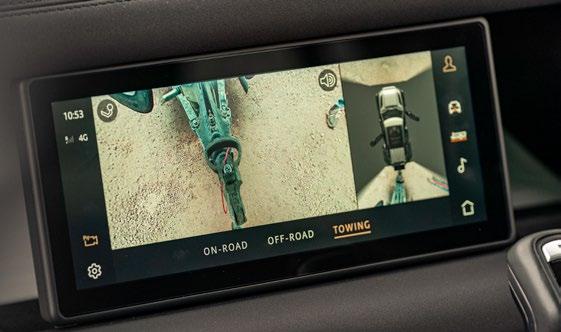
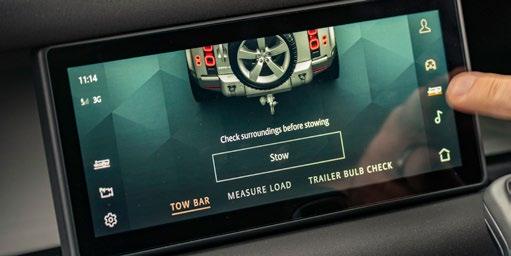
Once in position it was time to jump out to finish the job and attach the trailer. I have further two options here, I can either open the back door and use the suspension button to raise the vehicle, or use the key fob.
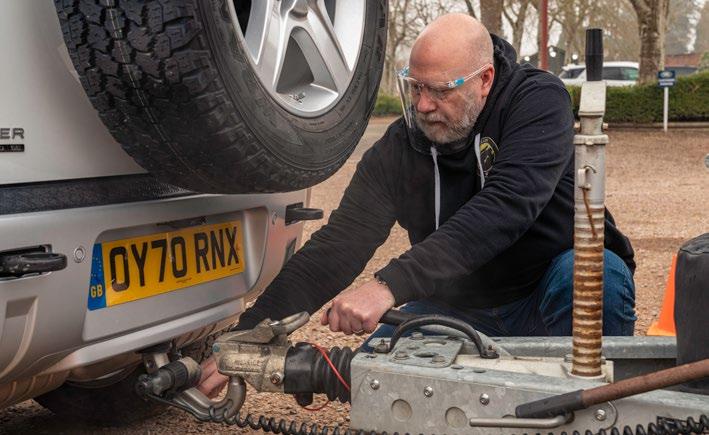
With the trailer secure it was time to test the nose weight of the trailer, something that not a lot of people do, I know I didn’t when I had my old caravan.
Don’t worry, we didn’t dig out a set of bathroom scales and some planks of wood! By tapping a few buttons on the infotainment screen I selected ‘Measure Load’, which gives you the nose weight of your trailer.
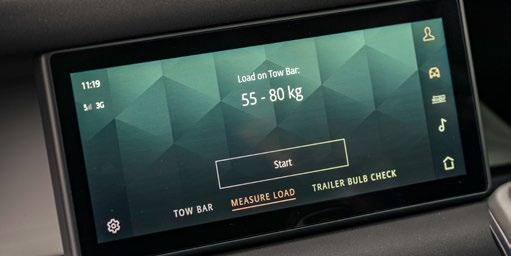
In case you were wondering, the maximum nose weight on the 5-door Defender is 150kg.
Back in the day, once I’d hitched up my old twin axle caravan and plugged in the electrics, I’d run back and forth making sure all the lights and indicators worked, but the new Defender has yet another dinky trick called ‘Bulb Check’.
For this you switch off the vehicle’s ignition, select ‘Trailer Bulb Check’ on the touchscreen, or press another button next to the back door, and watch as the bulb check illuminates all of the vehicle's lights and the corresponding trailer lights in turn. I love technology!
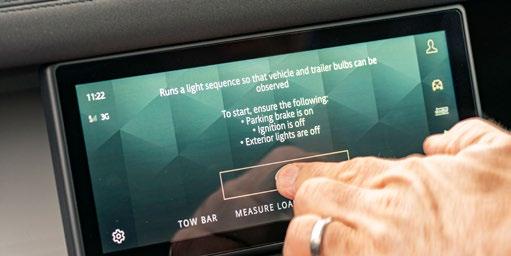
Satisfied our load was secure and all the lights worked, I was told to drive forward and through a short obstacle course, stop at the far end of the carpark and reverse back through the obstacle course returning the trailer back into its box without using any vehicle assistance, just my own skills!
"Yeah this is going to be fun," I thought.
Actually it was. Not wishing to blow my own trumpet or anything, but they say slow and steady wins the race, and without any mistakes I successfully reversed the unit back unaided. The trick for me is to hold the steering wheel at the bottom then turn it the same direction to where I wanted the trailer to go. My mate Chris taught me that.
Next I was told to drive forward again, but this time reverse using witchcraft - sorry, Advanced Tow Assist.
Following the trajectory lines for guidance, captured by the rearfacing cameras attached to the door mirrors, I began reversing.
I have to admit that it was initially rather strange reversing using only a rotary controller whilst watching the trailers trajectory displayed on the infotainment screen, but it was quite easy to master.
The only difficulty I had was knowing how many turns on the dial was enough to turn the front wheels, but it showed me that too!
For me, the best feature on Advanced Tow Assist is that once you have your trailer facing exactly where you want it to go you simply press another button, let go of the steering wheel, and with gentle acceleration it’ll straighten up the Defender for you and keep reversing straight until you press the brake pedal to stop.
It was a fun morning, and an excellent way of demonstrating their new technology. Overall, I reckon for a complete trailer novice, once you’ve set it up, Land Rover’s Advanced Tow Assist is brilliant. It’s a very clever and stress-free way to reverse your trailer. Next up, I got to take the Defender off-road...
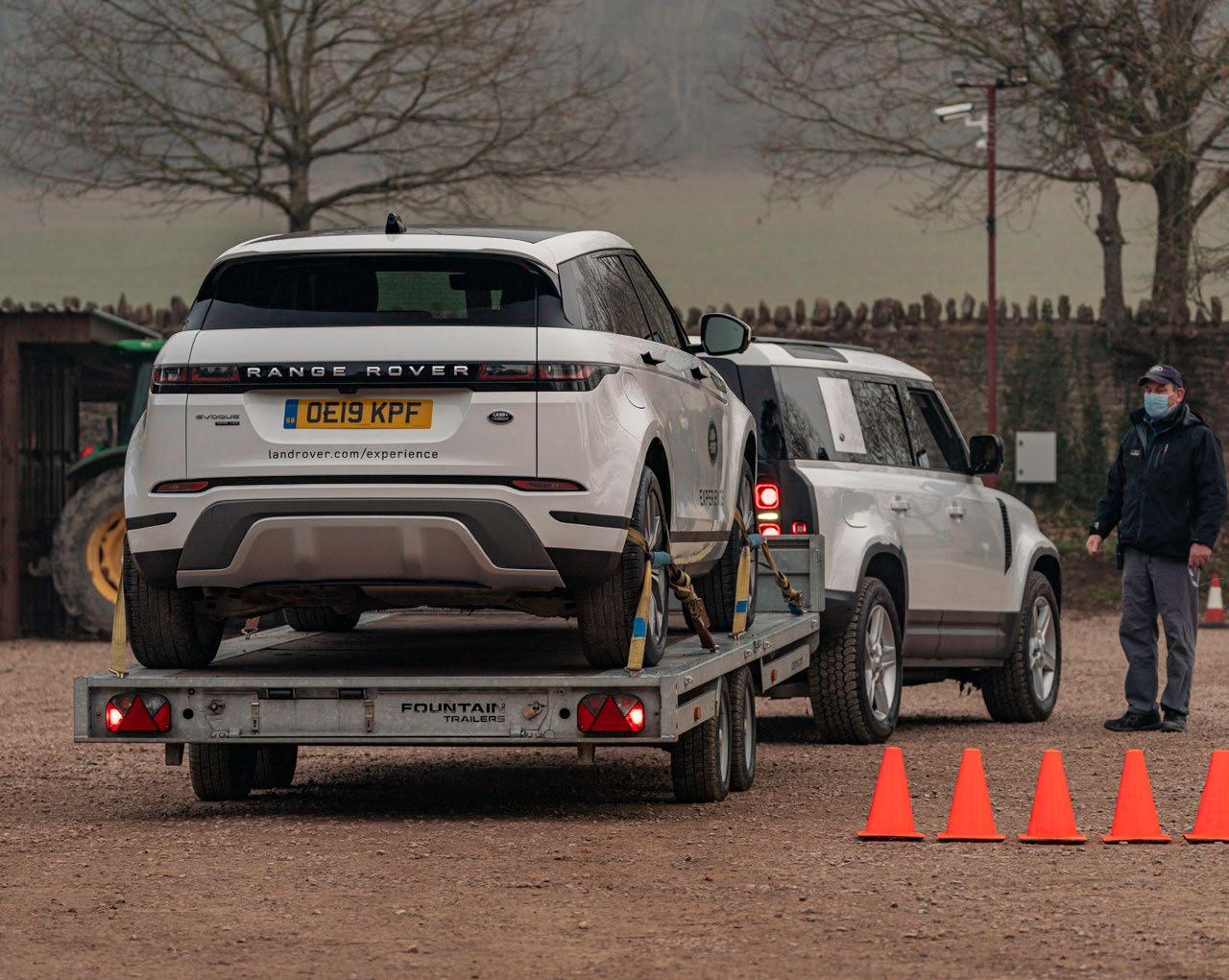
Defender Off-Road
Suitably impressed with their Advanced Tow Assist, after lunch it was time to see how the Defender 110 handled off-road.
This wasn’t the first time I’d taken a Defender around the myriad of tracks around Eastnor Castle, but it was the first time I’d experienced it in the wet. Fitted with road tyres and on-road pressures, we weren’t making it easy for these Defenders.
As we approached the off-road route I pressed the button that engages the low-range gearbox, which activates the off-road mode for the air suspension, giving 300mm of ground clearance, which incidentally is 40mm higher than the old Defender. I then switched the Terrain Response system to Mud and Ruts, set the hill descent to a sensible speed, and was ready to go.
The squelch of the slippery mud from underneath the road biased tyres was addictive (as is the aroma of mud on a hot exhaust), and as you would expect, the Defender made everything look easy as we spent the rest of the afternoon exploring the many the tracks. If I went through every single corner, hill and descent, you’d be bored, so let’s just say that the new Defender is an amazingly capable off-road machine, and so it should be.
It’s often the little things that we don’t first notice that impress us the most - auto hold was one of them. I’d arrive at a particular gnarly section with the bonnet pointing upwards, and at a ridiculously off camber angle, take my foot off the accelerator waiting for the lead Defender to climb a hill, and that’s where I stayed until I prodded the throttle again.
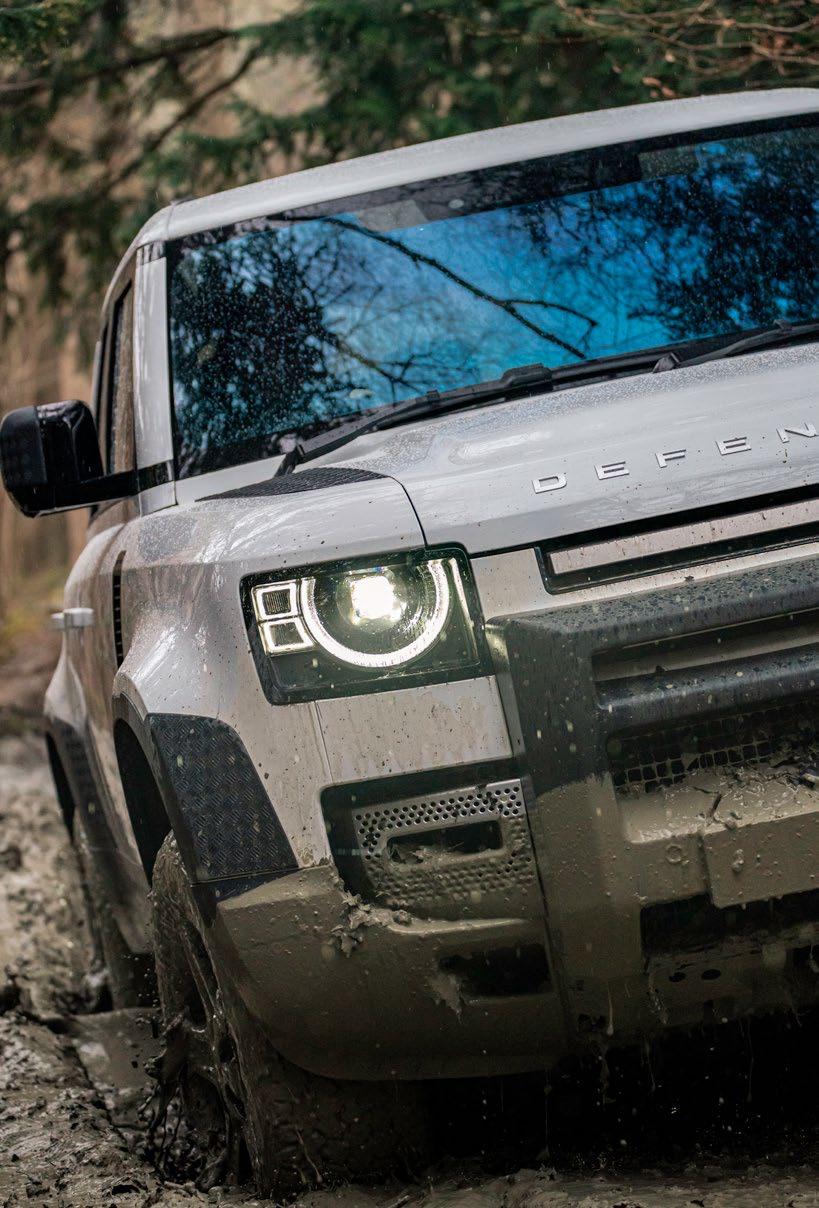
For an hour or so, as we climbed, leant and lurched our way through the trees, I’d been letting the automatic gearbox and the rest of the electronics do all the hard work, that is until we arrived at a very tight hairpin bend on a moderately steep incline. Oh yeah, and there was greasy mud, lots of it.
The lead Defender with the Land Rover Experience team in hit the bend with some force, and continued with momentum around the bend and up the hill. Surprisingly, this was the first time all afternoon that any sort aggressive driving was called for.
My turn next, and I took it easy up to and around the bend, so as not to remove the front bumper on the high banking, but as I got round the hairpin, the lead vehicle had taken off the top layer of mud and I ended up spinning to a halt.
Reversing back I opted to use a little more momentum, but as I turned the corner I again lost traction - this was becoming embarrassing.
For my third attempt I decided to swap to manual mode and engage second gear and just floored it! With mud flying in the air and lots of turning of the steering wheel in an attempt to find grip, traction was found,. Somehow, and at god-knows-what RPM, I made it up the hill with both a huge grin on face and a good dollop of Eastnor mud on my shoulder, as I hadn’t closed the window.
Parking up I rushed back down the hill to see how the next two Defenders fared. Both required a few attempts as there was hardly any grip left, but again, with mud in the air and plenty of revs, both made it up.
Obviously, life would have been easier if we’d lowered the tyres' pressure or swapped them for mud terrains, but the whole point was to show what a standard Defender can achieve.
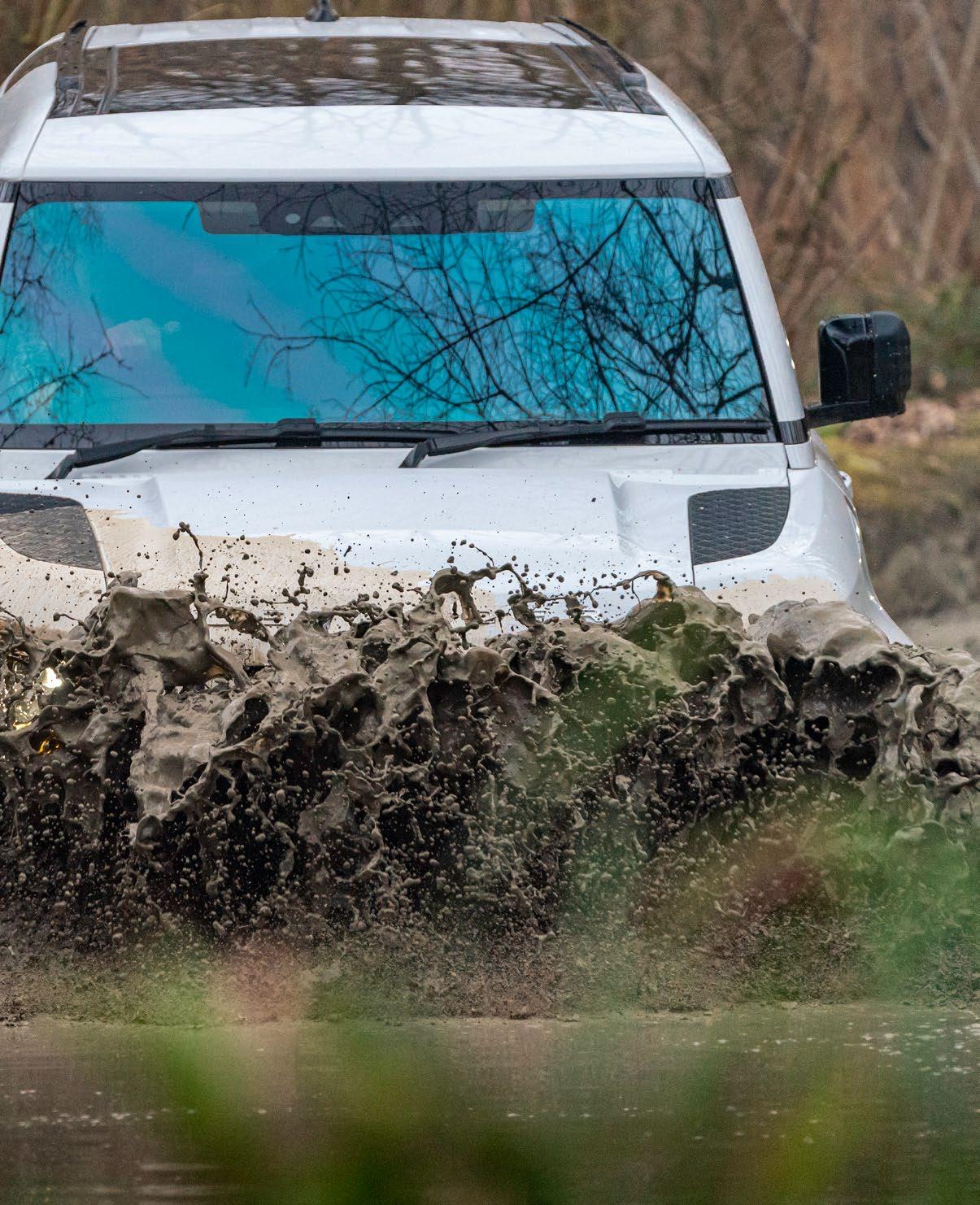
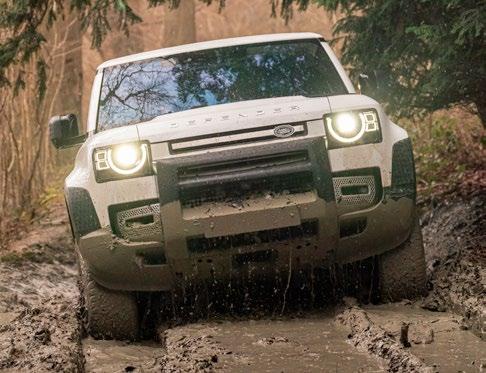
As the saying goes, 'what goes up, must come down', and there were plenty of descents. As anyone with ‘offroading’ experience knows, there’s only so much electric aids and low gearing can achieve before you simply end up tobogganing down a hill. We did a lot of that!

That said, by using the switch on the steering wheel I was able to adjust the Hill Descent control speed which did help on occasions, as did accelerating slightly, but on some sections, the descents were simply too steep and too slippery.
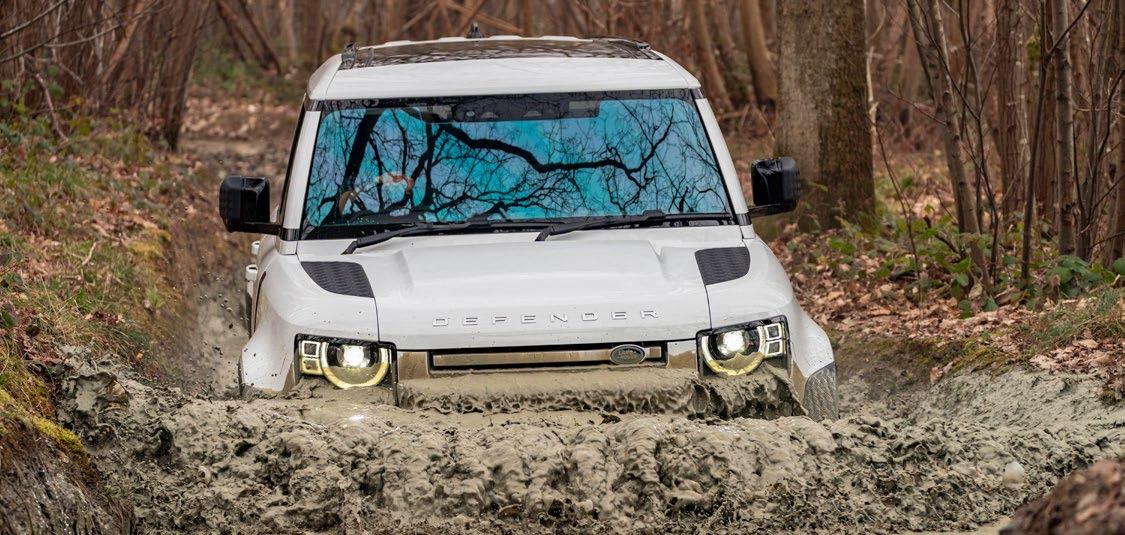
By around 4pm it was time to call it a day, and what a fantastic day it turned out to be. The new Defender is proving to be a very capable, and clever 4x4, but sadly out of the price range for many enthusiasts.
Having said that, by the time you’re reading this I will have just enjoyed a day out driving the new commercial range of Defenders, with the 90 Hardtop starting at a smidge under £36,900 and the 110 at £43,771 (both ex-VAT).











